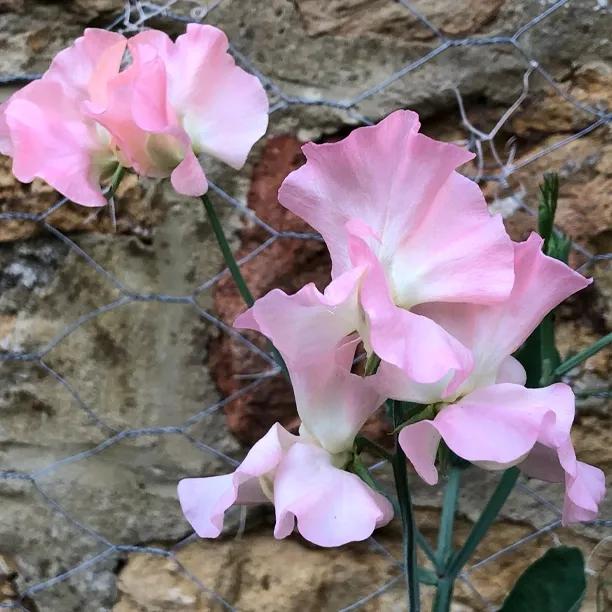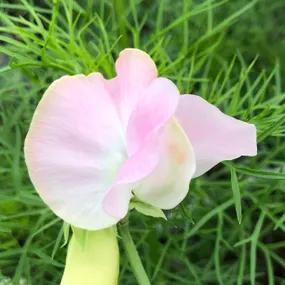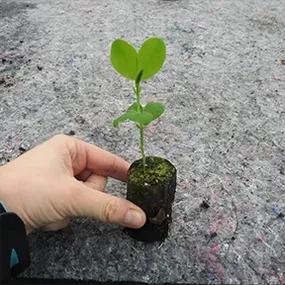Pink Pearl Sweet Pea Plants
The details
- Colour: pastel pink
- Stem: long
- Height: 1.8m
- Type: Spencer
- Scent: strong
- Flowering: June to September
- Planting Months: March-June
Recommended extras
Description
Lathyrus odoratus Pink Pearl
Pink Pearl is an annual sweet pea in the prettiest, softest shade of pink. It opens from white buds with just a touch of pink to a lovely flower with delicately waved petals and a rich perfume, a classic Spencer type, on long, strong stems. Like all sweet peas, Pink Pearl needs a good support network to clamber up. Provide this in the form of a wigwam of canes or hazel, a tall obelisk or a pergola. Do tie or wind in the shoots to begin with to help plants get a good hold, then they'll romp away. Pink Pearl will flower from June to September, or even later if you make sure it doesn't set seed. Pick the flowers to bring indoors – its long, strong stems mean it works well in vases. As the flowers on the plant fade, deadhead them, and you'll be rewarded with an even longer display.
Not to be confused with the perennial sweet pea Pink Pearl.
Browse our range of sweet pea seedlings.
Our Sweet Peas are delivered in purpose-designed, recycled cardboard packaging, and are ready to be planted out when you get them.
We generally send them out between March and May, but we will email you with the likely delivery timescale once you have placed your order.
Features
- Colour: pastel pink
- Stem: long
- Height: 1.8m
- Type: Spencer
- Scent: strong
- Flowering: June to September
- Planting Months: March-June
Growing
A border full of colourful sweet peas is a sight to see, and the scent will knock your socks off, too. Pastel colours like Pink Pearl look great with other cool pinks, purples and blues, such as lavender blue Our Harry. Or try growing it with pale pink and lilac Turquoise Lagooon: it's a match made in paradise. Always find them a sunny spot, and keep them really well watered (this is the trick to avoiding mildew). In dry weather, a good soaking in the evening is the best way to do this. Of course sweet peas combine wonderfully with any of the classic English garden favourites, such as lady's mantle, roses, lupins, lavender and cosmos, to create a rich tapestry of colour and scent in beds and borders. You can grow annual sweet peas in pots, too. There are a few rules you need to follow, the first being to never let the pots dry out, and the second being to start off with good, rich compost, and feed during the flowering season. Obviously, they'll need supports to climb up. Finally, a wigwam of sweet peas in a vegetable bed is a good idea. It'll attract pollinators, look gorgeous and quite possibly fix nitrogen in the soil (see below).
Did You Know?
We've long believed that the root nodules in pea and bean plants 'fix' nitrogen in the soil. In an episode of Gardeners' Question Time, Chris Beardshaw said that in fact only about 3% of the sweet pea's nitrogen remains once the plant has flowered (leguminous roots don't start sharing their nitrogen until the plant die back or are pruned). Still better than nothing!
Cultivation Instructions
Plant Pink Pearl Sweet Peas in well prepared, moist soil that ideally was enriched with organic matter the previous autumn (if you did not do it then, do it now!). Erect supports for the peas to climb up before planting. They can also be planted in pots of sufficient size - allow 6 litres per plant - and with an ideal planting medium of 50% compost, 40 %top soil and 10% well-rotted manure. General purpose compost will do however but produces fewer flowers.
The principal requirement is enough water - Sweet Peas are thirsty and hungry plants. They can cope with a little shade but flower better in full sun.
Space each plant about 30 cm apart and about 5 cm from its support. The hole should be deep enough to accommodate the longest root and the soil should come up to the level of the first side shoot. Use wire/netting/twine between the supports so that the Sweet Pea can climb naturally. You will still need to tie them in to the frame. They grow fast, so check every ten days or so.
Water well; the soil around sweet peas should never dry out. As the flowers develop pick them and then pick again, otherwise they start to form seedpods and will stop flowering altogether. Keep tying in and picking for as long as you can. Perfectionists will remove the curling tendrils which grip other stems and can result in flowers with wiggly stems and also will remove side shoots. see the website for more advice on training sweetpeas.
By all means apply a high potash and phosphate fertiliser during the growing season. (Sweet Peas actually fix nitrogen from the air into the soil so you don't need more of that.) Home-made comfrey liquid is perfect or Tomorite will do especially if you are on a sandy soil.




